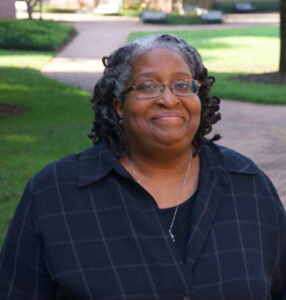
To Teach Collaboratively or Not?
Throughout my twenty-five plus years of teaching I have most often declined opportunities to “team teach” (the terminology used in my institution) in the historically and predominantly white seminary I have spent the longest part of my teaching career. Why? Two primary reasons. First, I was the only full-time African American professor for a very long time. I had students questioning my qualifications because I was Black and female, so why would I place myself in a position to be judged worthy or not by students because my content and method differed radically from that of my white colleague? Second, I did not want to be patronized by a white colleague either defending my “right” to teach or “correcting” my position as That Womanist liberation ethicist.
Some readers are perhaps wondering why I didn’t give my students and colleagues the benefit of the doubt? Well, I have spent most of my educational life as a student and teacher in historically white institutions. I have repeatedly been on the receiving end of well-meaning but white racially-biased surveillance and censoring by white students, professors, and faculty colleagues. Yes, I think that genuine mutual respect has developed now between me and my current colleagues. Still, implicit bias and racist socialization runs deep in ways with which my white colleagues are not yet ready to grapple.
Thus, when Professor Mitzi Smith and Professor Dan Ulrich invited me to join them as a consultant (along with Dr. Mary Hess) for their project, “The Challenges of Effective Pedagogy of a Trans-Contextual Online Collaboration for an African American/Womanist Hermeneutics Course during COVID-19,” I was intrigued. The words “trans-contextual online collaboration” drew me to say yes. Given my reluctance to team teach in my context, I was impressed by my new colleague’s (Dr. Smith) willingness to teach with a white male colleague from another seminary while living into the learning curve for many of us in adapting to online teaching in response to the pandemic.
Several questions came immediately to the forefront for me: Are Drs. Smith and Ulrich doing any pre-course race-gender-class work with each other? Or are they simply going to work through the inevitable race-gender-class tensions as they arise while the course is taught? How is “trans-contextual” to be understood? Is it an exchange across geographical borders and institutional boundaries and/or crossing dynamics of power between the two professors, between the professors and the students, between the different institutional norms for teaching and learning?
This pedagogical decision of the course was ambitious: having an African American Womanist biblical scholar and teacher “out front,” while a white male biblical scholar was “a learning/teaching professor.” As a consultant, I worked hard to contribute helpful insights about the tensions that the two professors shared with us. Asking clarifying questions was my first way of engaging this. As both professors’ blogs revealed, they did honestly grapple with each other. My further questions were about whether students understood the roles and did not attempt to “force” a more familiar pattern of engaging the white male professor.
After our last consultation, I remain convinced that it is necessary for professors to do race-gender-class work prior to and throughout trans-contextual or team teaching. In other words, teaching empathetically and justly with a colleague across race, gender, and class lines requires intentional dialogue to make explicit the race-gender-class assumptions of the teachers involved. This work must be as much a part of course preparation as learning the subject matter of the course from the perspectives and methodologies of each other. Most importantly, teaching collaboratively or team teaching adds a level of preparation and ongoing dialogue; reflecting with an African American woman and a white woman as consultants was a definite step in the right direction.
COVID-19 necessitated teaching this course about homelessness online, and this created a barrier to direct engagement with persons who are homeless and with practitioners who work in solidarity with these persons. Professor Smith used pedagogical methods and reading assignments that created space for developing empathetic sensibilities for persons who are experiencing homelessness, rather than considering homelessness as solely a social justice issue. Likewise, she taught Womanist and African American biblical hermeneutical skills for teaching and preaching that can impact the lives of homeless persons through ministerial practice and can influence public policy. Lesson: Improvisation catalyzes online pedagogies, pandemic or not.
To teach collaboratively, or not? I just might give it a chance, under the right conditions.
Leave a Reply